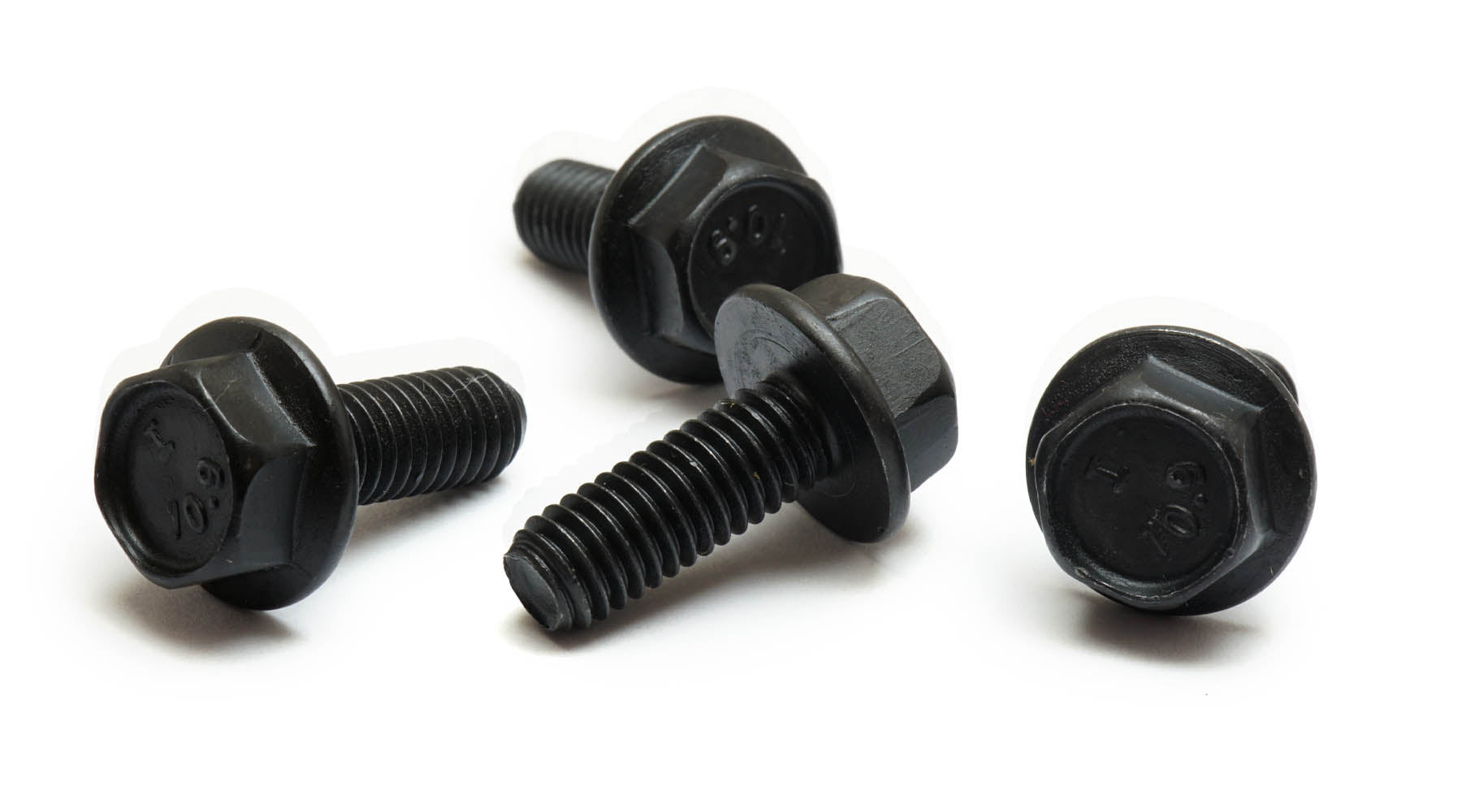Black Oxide Finish Guide: Process, Benefits & When to Use Black Fasteners
Quick Answer: Black oxide is a thin, dimensionality-neutral conversion coating (magnetite) applied to steel and stainless steel. By itself it offers modest corrosion resistance; paired with oil or wax it resists rust better and gives a deep black, low-gloss appearance—great for close-tolerance parts and sleek builds.
What Is Black Oxide?
Black oxide is a conversion coating—the steel surface is chemically transformed into a thin layer of magnetite (Fe₃O₄). Because material is converted (not deposited), dimensions change minimally, making it ideal for fasteners, tools, and precision assemblies where fit matters.
Black oxide is a conversion layer, so parts remain essentially on-size. Typical change is about ~10 micro-inch (0.00001″), far thinner than many deposited coatings (e.g., zinc). That’s why it’s popular when fits/tolerances are tight.
How the Finish Is Made
Hot/Mild Temperature Bath Process
- Clean: Alkaline detergent (e.g., sodium hydroxide/lye) to remove oils/scale.
- Rinse: Water rinse to clear chemistry between stages.
- Oxidize: Immersion in an oxidizing salt bath (often nitrates/nitrites) at ~194–286°F forms the black magnetite layer.
- Seal: While warm, parts are coated with oil or wax to enhance corrosion resistance and deepen color.
The sealed film is very thin—commonly < 0.00001″ thickness equivalent.
Thermal Black Oxide
In some heat-treat cycles (quench and temper), a controlled oxide forms on the surface—often called thermal black oxide. It provides similar appearance with properties tied to the underlying heat-treat process.
Metals commonly finished
- Steel & Alloy Steel
- Stainless Steel (black oxide on stainless)
- Copper alloys (often marketed as “Ebonol C”)
- Zinc (often marketed as “Ebonol Z”)
Benefits & Limitations
Why builders choose Black Oxide
- Minimal dimensional change for close-tolerance parts.
- Low-gloss, deep black aesthetic—reduces glare, looks premium.
- Good abrasion resistance for a thin film; won’t flake like thick deposits.
- Cost-effective vs. many decorative black platings.
Know the limits
- Modest corrosion resistance by itself; relies on oil or wax for improved rust protection.
- Not for harsh exterior/coastal without frequent maintenance (consider stainless 316 or hot-dip galvanized instead).
- Appearance can dull as the oil/wax film wears; re-oil to refresh.
Black Oxide vs. Other Finishes (At a Glance)
| Finish | Corrosion Resistance | Appearance | Good For | Watch Outs |
|---|---|---|---|---|
| Black Oxide (+ oil/wax) | Low → Moderate (with oil/wax) | Matte to satin black | Close fits, interior, aesthetic builds | Needs re-oiling; not for harsh outdoors |
| Zinc Plated | Moderate (better with topcoats) | Silvery; can be black chromated | General purpose, cost-effective | Can white-rust; not coastal-grade |
| Phosphate + Oil | Low → Moderate (with oil) | Gray/black matte | Break-in wear, paint base, tooling | Oil dependent; indoor biased |
| Stainless (18-8/316) | High (316 highest) | Silvery; can be blackened | Outdoor, marine, corrosion-critical | Cost; galling risk (use anti-seize) |
Black Oxide (+ oil/wax) Low → Moderate (with oil/wax) Very low (~0.00001") Matte to satin black Close fits, interior, aesthetic builds Needs re-oiling; not for harsh outdoors Zinc Plated Moderate (improves with topcoats) Low Silvery; can be black chromated General purpose, cost-effective Can white-rust; not coastal-grade Phosphate + Oil Low → Moderate (with oil) Low Gray/black matte Break-in wear, paint base, tooling Oil dependent; indoor biased Stainless (18-8/316) High (316 highest) None (base metal) Silvery; can be blackened Outdoor, marine, corrosion-critical Cost; galling risk (use anti-seize)
Care, Oil/Wax & When to Choose It
- Indoors: Black oxide fasteners perform well, especially with occasional re-oiling.
- Outdoors: Choose black-oxided stainless for aesthetics; for tough exposure (coastal, road salt) prefer 316 stainless or hot-dip galvanized.
- Maintenance: Wipe a light machine oil or wax on exposed black oxide periodically to refresh protection and color depth.
- Tolerances: If mating fits are tight, black oxide is a smart “no-growth” finish compared to thick platings.
Frequently Asked Questions
Will black oxide bolts rust?
They can. Black oxide alone offers basic protection; paired with oil or wax it resists rust better. Black-oxided stainless retains stainless’ inherent corrosion resistance beneath the blackened surface.
Why apply black oxide to stainless steel?
Primarily aesthetics: you get the corrosion resistance of stainless with a low-gloss black appearance (useful for glare reduction and styling).
Does black oxide change dimensions?
Negligibly. It’s a conversion layer typically on the order of ~0.00001″, making it ideal where tight fit matters.
What chemicals are used in the bath?
Typical systems use alkaline cleaners (e.g., sodium hydroxide) and oxidizers (e.g., nitrate/nitrite). Sealing with oil or wax is common practice for appearance and added corrosion resistance.
When should I avoid black oxide?
In harsh outdoor or marine environments without regular maintenance. Use stainless 316 or hot-dip galvanized instead for long-term corrosion resistance.
Shop Black Oxide Fasteners
- All Black Oxide Fasteners – Screws, nuts, washers, and more.
- Black Oxide Socket Head Cap Screws (Metric)
- Black Oxide Button Head Screws (Metric)
- Black Oxide Flat Head Screws (Metric)
- Black Oxide Socket Head Cap Screws (Inch/SAE)
- Black Oxide Button Head Screws (Inch/SAE)
- Black Oxide Flat Head Screws (Inch/SAE)
- Black Oxide Washers
- Black Oxide Nuts
Browse our full range of black oxide fasteners to find the exact screws, nuts, and washers your project needs.
Questions? Call (850) 764-2658 or email support@MonsterBolts.com — we’re happy to help pick the right finish for your environment.
*The example notes are simplified to illustrate concepts only. For any safety-critical connection, follow manufacturer specs and applicable standards.

